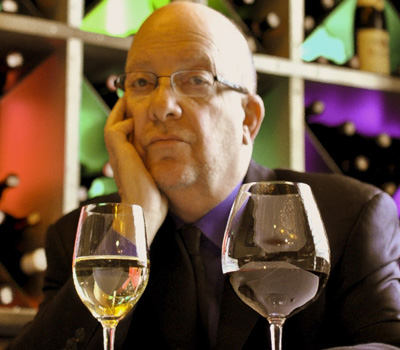

You’ve got Sonoma-Cutrer as the top-selling wine—and it’s the only California wine among your top ten.
Sonoma-Cutrer’s been on the list as long as I’ve been here and every year we sell more of it than anything else. It’s a function of price, and that people know it—they gravitate towards it.
I’m definitely seeing a decline in California wine sales, though it not precipitous. Even though we’re right here on the edge of the Metropolitan area, this is not Manhattan. In New Brunswick, our clientele is generally less knowledgeable about wine than your average clientele in the city. Seven years ago, when I came here, all we sold was California cabernet. Now people are realizing that it’s generally overpriced and there are other options; it’s a parallel to what has happened with Bordeaux.
The cabernet drinker is going to Spain, to the Rhone, to Italy. We’ve been selling a lot of Barolo to ex-California cabernet drinkers. A lot of young business people start out drinking California cabernet, and then they move on.
You do list a Washington cabernet among your top-ten (Ex Libris) and two Oregon pinot noirs (Evening Land and Westrey).
I like Washington cabernets. They’re often more elegant, not overblown, not over done, not over ripe, a little more focused and restrained. I try to keep some Washington cabernet in that right spot in terms of price [$49] for people to gravitate to. And ex-cabernet drinkers have been switching to Oregon pinot, or pinot in general.
And yet the Beuhler Cabernet from Napa Valley is one of your most popular wines by the glass.
It’s at the higher end for us by the glass (about $18). Despite everything I’ve said about people switching, I’ve found that people are willing to spend on a glass of good California cabernet, rather than something that might be more esoteric to them. They feel safer spending a little more money for it.
Before we talk whites, what’s the story with the Mendoza malbec on your top-selling list?
That’s the d’Angelis Viña 1924, from super old vines. I’m not sure if it’s a different clone of malbec, but it has significantly more polish than most—more definition and complexity.
For sauvignon blanc, you’ve got Cloudy Bay from New Zealand in the number five spot followed by the Karine Lauverjat Sancerre.
I think Sancerre in our market is probably making a comeback—sauvignon blanc in general. We sell more than we used to, especially by the glass. White Bordeaux for a while seemed moribund, but now seems on the upswing. People are asking for it and are happy to be drinking it.
Is that the case with chenin blanc as well? I was interested to see a Huet Vouvray on your top ten list.
I have seen some movement in chenin, Vouvray especially; sales have picked up in the last few years. A couple of people on the floor love the Huet and love to sell it—it’s well priced and a great bottle of wine.
Among fortified wines, it looks like you’re selling more Sherry than Port.
I have to say that I’ve been kind of fanatic about Sherry this past year, which I never had been before. Part of that was coming to one of the Sherry tastings at W&S, which was spectacular. Also, I went to lunch with a guy from Lustau, and they paired a long menu all the way with Sherries. I’ve been fascinated with them. So we did a game tasting menu in the fall and I paired the whole menu with Sherry. Duck consommé with black truffle cream paired with a Lustau Jarana Fino; venison carpaccio with shaved pear and cashews paired with Lustau Los Arcos Amontillado; wild pheasant terrine with Sherry braised chestnuts paired with Lustau Palo Cortado Peninsula (a prior match of braised rabbit with Palo Cortado was out of this world). The main course was a wild boar chop, grilled, paired with Oloroso Solera Gran Reserva Emperatriz Eugenia. For dessert: pumpkin flan with East India Oloroso. It sold really well, I was surprised. I thought it might do a Hindenburg and fizzle to the ground. But it went well and we did it from the end of October to New Year’s Eve. So while we were doing the tasting menu, the staff got excited about them and have been recommending them. In addition to the Lustau wines, we have Hidalgo, Bodegas Tradición and Sandeman.
In general, we’ve been doing really well with Spanish wine, which is a big change from the past. I’ve spurred it—but I tried to do that seven years ago and it didn’t go anywhere. For a while, the only thing that would sell would be Rioja. Lately, it’s across the board: People are much more open and willing to try something different within Spain, from Priorat to Montsant, Ribera del Duero, Toro and Jumilla.
Joshua Greene is the editor and publisher of Wine & Spirits magazine.
















